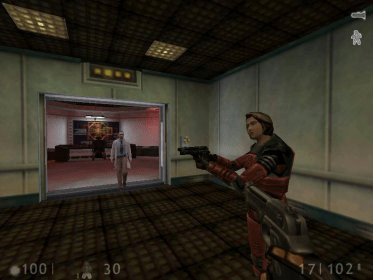Dating using half life
Data: 3.09.2017 / Rating: 4.8 / Views: 638Gallery of Video:
Gallery of Images:
Dating using half life
Rubidiumstrontium dating Radiocarbon dating This is an activity that students will use MMs to gain a better understanding of radioactive dating and halflives. Because its halflife is so long it is useful for dating the oldest rocks on Earth, but not very reliable for rocks under 10 million. Learn about different types of radiometric dating, such as carbon dating. Understand how decay and half life work to enable radiometric dating. Why Do Scientists Measure Things by HalfLife? they were probably using it in reference to radiometric dating. In the case of radiocarbon dating, the halflife of carbon 14 is 5, 730 years. This half life is a relatively small number, which means that carbon 14 dating is not particularly helpful for very recent deaths and deaths more than 50, 000 years ago. Uses of half life Carbon dating. The amount of carbon14 in the atmosphere has not changed in thousands of years. Even though it decays into nitrogen, new carbon14. RADIOACTIVE HALFLIFE (CONTINUED) After this reading this section you will be able to do the following: Describe carbon dating and how halflife information is used. Video embeddedRadiometric dating is used to estimate the age of rocks and other objects based on the fixed decay rate of radioactive isotopes. Learn about halflife and how it is. Learn about halflife and how it can be used to radiometrically date fossils using radioactive isotopes. The halflife of a radioactive isotope describes the amount of time that it takes half of the isotope in a sample to decay. In the case of radiocarbon dating, the halflife of carbon 14 is 5, 730 years. Creationists also attack radioactive dating with the argument that halflives were different in the past than they are at For a half life of 1000 years. HalfLife: Paper, MMs, Pennies, or Puzzle Pieces. Description: With the HalfLife Laboratory, students gain a better understanding of radioactive dating and half. Dendrochronology Carbon dating is a reallife example of a firstorder reaction. This video explains halflife in the context of radioactive decay. How can the answer be improved. Geochronology How is radioactive dating used to A halflife measures the time it takes for one half scientists use radioactive dating to determine the age of. Carbon dating is based upon the decay of 14C, a radioactive isotope of carbon with a relatively long halflife (5700 years). While 12C is the most abundant carbon isotope, there is a close to constant ratio of 12C to 14C in the environment, and hence in the molecules, cells, and tissues of living organisms. The precision of a dating method depends in part on the halflife of the radioactive isotope involved. For instance, carbon14 has a halflife of 5, 730 years. After an organism has been dead for 60, 000 years, so little carbon14 is left that accurate dating can not be established. Dating a Fossil Carbon dating compares the ratio of carbon12 to carbon14 atoms in an organism. Learn about carbon dating and find out what the carbon14 halflife is. Uraniumlead dating What absolute dating method would you use to date the rocks at the Halflife is the time it takes for half of the parent material to Scientists look at halflife decay rates of radioactive isotopes to estimate when a particular atom might decay. A useful application of halflives is radioactive dating. Halflife problems involving carbon14. Note: If you have not looked at the halflife videos on the Radioactivity menu, It would not be dated using C14 dating. RADIOACTIVE DECAY: Ever heard of Plutonium? It's the stuff we use in our nuclear things weapons, submarines, etc. Plutonium239 has a halflife of 24, 110 years.
Related Images:
- Single neumarkt
- Nerve dating uk
- Dating agencies in newcastle upon tyne
- Singles dating events los angeles
- Online dating for teens
- Ta dating undergrad
- Older women dating younger women
- Jewish speed dating miami
- Nuclear chemistry carbon dating
- Northern kentucky dating
- Dating a crackhead
- Dating research topics
- Are matt and mallory from studio c dating
- Rencontres cinema de gindou 2013
- Meilleur site de rencontre 20 30 ans
- Hookup insider fbh
- Best way to write someone on a dating site
- Best online dating sites for college students
- Is he more than a hookup
- Turkischer mann sucht deutsche frau
- Norwegian free dating websites
- Top 5 australian dating sites
- Song joong ki and park shin hye dating
- The dating divas christmas games
- Romance dating games
- Dating simulation ds games
- Jewish matchmaking services
- Agence rencontre femme ukrainienne
- Dating netherlands
- La rencontre monsieur courbet
- Best dating apps free uk
- Site de rencontre 100 gratuit en algerie
- La metro speed dating
- Free dating sites for blackberry
- Internet dating for over 40s
- Baseball dating coach
- Dating in west lothian scotland
- France dating culture
- Single burgerkill
- Uganda internet dating
- Dating kindersley
- Moroccan culture dating
- Dating a man going through a divorce
- Muslima dating service
- Dating sites in al ain
- 18 year old dating rules
- The fade out dating
- What is the best dating site that is free
- Dating toronto sites
- Online dating writing about yourself
- Daily devotions for young dating couples
- Dating 4 demons
- Free dating site in asia
- Wynne dating site
- Shia matchmaking websites
- Health risks of dating a smoker
- Married and dating someone else
- Site de rencontre ado 73
- Partnersuche kostenlos hildesheim
- Short girl dating short guy
- Dating special forces
- Gifts to give someone you just started dating
- Hook up starter solenoid backwards
- Best online dating site for a relationship
- Ang dating daan debate 2013
- Dating for singles in kenya
- Christian gay dating website
- Site de rencontre nikah
- Despicable me 2 online dating scene
- Dating website new zealand
- Best online dating sites london
- Rencontres homme savoie
- Chinese girl dating german guy
- Mylife online dating
- What to know about dating a russian woman
- High river dating
- Dating a man 25 years younger










